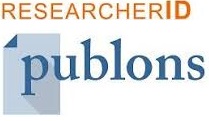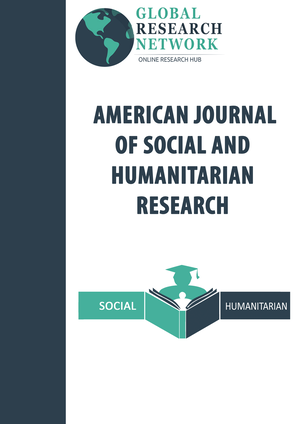Digital Health During COVID-19 Pandemic: Challenges and opportunities Review
Abstract
Corona virus pandemic caused an enormous effect on medical care, public activity, and economies on a worldwide scale. Clearly, technology has a vital role to empower omnipresent and available digital health services in pandemic conditions just as against “reappearance” of COVID-19 disease in a post-pandemic period. Likewise, 5G systems and 5G-empowered e-health arrangements are principal. This paper features philosophies to adequately use 5G for e-health use cases and its job to empower significant digital healthcare services. It's anything but a comprehensive conversation of the implementation issues, potential cures and future research bearings for 5G to lighten the health challenges related to COVID-19.
Keywords
Full Text:
PDFReferences
Park, Moon Il, and Jung Bae Yoo. “Clinical application of tape-recorder and telemetry system for analysis of fetal heart rate.” Korean Journal of Obstetrics and Gynecology 34.7 (1991):915-926.
Park, Moon Il, et al. “Fetal heart rate telemetry system for monitoring of high-risk pregnancies.” Korean Journal of Perinatology 9.2(1998):159-164.
Kim, Hun-Sung. “Decision-making in artificial intelligence: is it always, correct?” JournalofKoreanmedicalscience35.1 (2020).
Kim, Hun-Sung, In Ho Kwon, and Won Chul Cha. “Future and Development Direction of Digital Healthcare.” Healthcare Informatics Research 27.2 (2021): 95-101.
Digital Diagnostics Inc. New CPT code for automated point-of-care retinal imaging [Internet]. Coralville (IA): Digital Diagnostics Inc.; c2020 [cited at 2021 Mar 30]. Available from: https://dxs.ai/newsroom/new-cpt-codefor-automated-point-of-care-retinal-imaging/.
Shah, Abhay, et al. “Validation of automated screening for referable diabetic retinopathy with an autonomous diagnostic artificial intelligence system in a Spanish population.” Journal of diabetes science and technology 15.3 (2021): 655-663.
Abràmoff, Michael D., et al. “Pivotal trial of an autonomous AI-based diagnostic system for detection of diabetic retinopathy in primary care offices.” NPJ digital medicine 1.1(2018):1-8.
Kim, Hun-Sung, In Ho Kwon, and Won Chul Cha. “Future and Development Direction of Digital Healthcare.” Healthcare Informatics Research 27.2 (2021): 95-101.
Lee, Youngnam, et al. “Deep learning in the medical domain: predicting cardiac arrest using deep learning.” Acute and critical care 33.3 (2018): 117.
Kwon, Joon‐Myoung, et al. “Deep learning–based algorithm for detecting aortic stenosis using electrocardiography.” Journal of the American Heart Association 9.7 (2020): e014717.
Kang, Da-Young, et al. “Artificial intelligence algorithm to predict the need for critical care in prehospital emergency medical services.” Scandinavian journal of trauma, resuscitation and emergency medicine 28.1 (2020): 1-8.
Park, Sehhoon, et al. “Deep learning-based predictive biomarker for immune checkpoint inhibitor response in metastatic non-small cell lung cancer.” (2019): 9094-9094.
Kim, Hun-Sung, In Ho Kwon, and Won Chul Cha. “Future and Development Direction of Digital Healthcare.” Healthcare Informatics Research 27.2 (2021): 95-101.
Pear Therapeutics Inc. Pear obtains FDA clearance of the first prescription digital therapeutic to treat disease [Internet]. Boston (MA): Pear Therapeutics Inc.; 2017 [cited at 2021 Mar 30]. Available from: https:// peartherapeutics.com/fda-obtains-fda-clearance-firstprescription-digital-therapeutic-treat-disease/.
Pear Therapeutics Inc. Pear Therapeutics announces first participant enrolled in virtual real-world study of adults with chronic insomnia [Internet]. Boston (MA):
Pear Therapeutics Inc; c2020 [cited at 2021 Mar 30]. Available from: https://peartherapeutics.com/pear-therapeutics-announces-first-participant-enrolled-in-virtual-real-world-study-of-adults-with-chronic-insomnia/.
Pear Therapeutics Inc. Product pipeline [Internet]. Boston (MA): Pear Therapeutics Inc.; c2021 [cited at 2021 Mar 30]. Available from: https://peartherapeutics.com/ science/product-pipeline/.
National Institute of Diabetes and Digestive and Kidney Diseases. Diabetes Prevention Program (DPP) [Internet]. Bethesda (MD): National Institute of Diabetes and Digestive and Kidney Diseases; c2020 [cited at 2021 Mar 30]. Available from: https://www.niddk.nih.gov/aboutniddk/research-areas/diabetes/diabetes-preventionprogram-DPP.
Moin, Tannaz, et al. “Results from a trial of an online diabetes prevention program intervention.” American journal of preventive medicine 55.5 (2018): 583-591.
Sepah, S. Cameron, et al. “Engagement and outcomes in a digital Diabetes Prevention Program: 3-year update.” BMJ Open Diabetes Research and Care5.1 (2017): e000422.
Kim, Hun-Sung, In Ho Kwon, and Won Chul Cha. “Future and Development Direction of Digital Healthcare.” Healthcare Informatics Research 27.2 (2021): 95-101.
Kumar, Rajiv B., et al. “Automated integration of continuous glucose monitor data in the electronic health record using consumer technology.” Journal of the American Medical Informatics Association 23.3 (2016): 532-537.
US Securities and Exchange Commission. Amendment No. 3 to Form S-1 Registration Statement under the Securities Act of 1933 [Internet]. Washington (DC): US Securities and Exchange Commission; 2015 [cited at 2021 Mar 30]. Available from: https://www.sec.gov/ Archives/Edgar/data/1477449/000104746915005538/ a2225135zs-1a.htm.
Teladoc Health Inc. Teladoc blazes a trail in the emerging virtual telehealth services industry [Internet]. Purchase (NY): Teladoc Health Inc.; 2016 [cited at 2021 Mar 30]. Available from: https://ir.teladochealth. Com/news-and-events/investor-news/press-releasedetails/2016/Teladoc-blazes-a-trail-in-the-emergingvirtual-telehealth-services-industry/default.aspx.
Versel N. Seven things we learned from the Teladoc IPO registration [Internet]. New York (NY): MedCityNews; c2015 [cited at 2021 Mar 30]. Available from: https:// medcitynews.com/2015/05/seven-things-we-learnedfrom-the-teladoc-ipo-registration/.
Noah, Benjamin, et al. “Impact of remote patient monitoring on clinical outcomes: an updated meta-analysis of randomized controlled trials.” NPJ digital medicine 1.1 (2018): 1-12.
Han, Xintian, et al. “Deep learning models for electrocardiograms are susceptible to adversarial attack.” Nature medicine 26.3 (2020): 360-363.
Choi YS. A study on the ECG measurement of Apple Watch 4 [Internet]. Seoul, Korea: YoonSup Choi’s Healthcare Innovation; c2018 [cited at 2021 Mar 30]. Available from: https://www.yoonsupchoi.com/2018/09/21/applewatch4-ecg/.
Begley S. FDA approves first direct-to-consumer test for breast cancer risk [Internet]. Boston (MA): STAT; 2018 [cited at 2021 Mar 30]. Available from: https://www.statnews.com/2018/03/06/fda-approves-test-breast-cancer/.
Global Digital Health Partnership. Evidence and evaluation [Internet]. New Delhi, India: Global Digital Health Partnership; c2020 [cited at 2021 Mar 30]. Available from: https://gdhp.nhp.gov.in/home/EvidenceEvaluation.
Kim, Hun‐Sung, et al. “Continuous glucose monitoring: current clinical use.” Diabetes/metabolism research and reviews 28 (2012): 73-78.
Kim, Hun-Sung, et al. “Using mobile phones in healthcare management for the elderly.” Maturitas 79.4 (2014): 381-388.
Kim, Hun-Sung, et al. “Randomized, open-label, parallel group study to evaluate the effect of internet-based glucose management system on subjects with diabetes in China.” Telemedicine and e-Health 22.8 (2016): 666-674.
Jung, S. H., et al. “Continuous glucose monitoring is needed to detect unrecognized hypoglycemic event in diabetic patients with stroke.” J Korean Diabetes 3 (2002): 140-51.
Lai, Chih-Cheng, et al. “severe acute respiratory syndrome coronavirus 2 (SARS-CoV-2) and coronavirus disease-2019 (COVID-19): The epidemic and the challenges.” International journal of antimicrobial agents 55.3 (2020): 105924.
Talal, Mohammed, et al. “Smart home-based IoT for real-time and secure remote health monitoring of triage and priority system using body sensors: multi-driven systematic review.” Journal of medical systems 43.3 (2019): 42.
Albahri, Ahmed Shihab, et al. “Role of biological data mining and machine learning techniques in detecting and diagnosing the novel coronavirus (COVID-19): a systematic review.” Journal of medical systems 44 (2020): 1-11.
Kaur, Harleen, et al. “A proposed solution and future direction for blockchain-based heterogeneous medicare data in cloud environment.” journal of medical systems 42.8 (2018): 1-11.
Boccardi, Federico, et al. “Five disruptive technology directions for 5G.” IEEE's communications magazine 52.2 (2014): 74-80.
Osseiran, Afif, et al. “Scenarios for 5G mobile and wireless communications: the vision of the METIS project.” IEEE's communications magazine 52.5 (2014): 26-35.
Andrews, Jeffrey G., et al. “What will 5G be?” IEEE Journal on selected areas in communications 32.6 (2014): 1065-1082.
Campion, Edward W., E. Dorsey, and E. Topol. “State of telehealth.” N Engl J Med 375.2 (2016): 154-161.
Hau, Yong Sauk, et al. “How about actively using telemedicine during the COVID-19 pandemic?” Journal of medical systems 44.6 (2020): 1-2.
de Mattos, Willian D., and Paulo RL Gondim. “M-health solutions using 5G networks and M2M communications.” IT Professional 18.3 (2016): 24-29.
Gupta, Rajesh, et al. “Tactile-internet-based telesurgery system for healthcare 4.0: An architecture, research challenges, and future directions.” IEEE Network 33.6 (2019): 22-29.
Osseiran, Afif, Jose F. Monserrat, and Patrick Marsch, eds. 5G mobile and wireless communications technology. Cambridge University Press, 2016.
Porambage, Pawani, et al. “Survey on multi-access edge computing for internet of things realization.” IEEE Communications Surveys & Tutorials 20.4 (2018): 2961-2991.
Soldani, David, et al. “5G mobile systems for healthcare.” 2017 IEEE 85th Vehicular Technology Conference (VTC Spring). IEEE, 2017.
Keeling, Matt J., T. Deirdre Hollingsworth, and Jonathan M. Read. “Efficacy of contact tracing for the containment of the 2019 novel coronavirus (COVID-19).” J Epidemiol Community Health 74.10 (2020): 861-866.
Baratè, Adriano, et al. “5G technology for augmented and virtual reality in education.” Proceedings of the International Conference on Education and New Developments. Vol. 2019. 2019.
Baldoni, Simone, Francesco Amenta, and Giovanna Ricci. “Telepharmacy services: present status and future perspectives: a review.” Medicina 55.7 (2019): 327.
Mahajan, Aman, Gregory Pottie, and William Kaiser. “Transformation in healthcare by wearable devices for diagnostics and guidance of treatment.” ACM Transactions on Computing for Healthcare 1.1 (2020): 1-12.
Palacios, Joan, et al. “Single-and multiple-access point indoor localization for millimeter-wave networks.” IEEE Transactions on Wireless Communications18.3 (2019): 1927-1942.
Naik, B. Naveen, et al. “Real-time smart patient monitoring and assessment amid COVID-19 pandemic–an alternative approach to remote monitoring.” Journal of Medical Systems 44.7 (2020): 1-2.
Santosh, K. C. “AI-driven tools for coronavirus outbreak: need of active learning and cross-population train/test models on multitudinal/multimodal data.” Journal of medical systems 44.5 (2020): 1-5.
Kiah, ML Mat, et al. “Design and develop a video conferencing framework for real-time telemedicine applications using secure group-based communication architecture.” Journal of medical systems 38.10 (2014): 1-11.
Patrinley, James Randall, et al. “Lessons from operations management to combat the COVID-19 pandemic.” Journal of Medical Systems 44.7 (2020): 1-2.
Hewa, Tharaka, et al. “The role of blockchain in 6G: Challenges, opportunities and research directions.” 2020 2nd 6G Wireless Summit (6G SUMMIT). IEEE, 2020.
Chang, Min Cheol, and Donghwi Park. “How can blockchain help people in the event of pandemics such as the COVID-19?” Journal of medical systems44.5 (2020): 1-2.
Blom, Annelies G., et al. Barriers to the Large-Scale Adoption of the COVID-19 Contact-Tracing App in Germany. Working Paper, 2020.
Hall, Joseph L., and Deven McGraw. “For telehealth to succeed, privacy and security risks must be identified and addressed.” Health Affairs 33.2 (2014): 216-221.
European Commission, EU data protection rules, 2016, URL https://ec.europa.eu/info/law/law-topic/data-protection/eu-dataprotection-rules_en.
Act, Accountability. Health insurance portability and accountability act of 1996. Public law 104 (1996): 191.
Semantha, Farida Habib, et al. “A systematic literature review on privacy by design in the healthcare sector.” Electronics 9.3 (2020): 452.
Kemmer, Florian, et al. “Software defined privacy.” 2016 IEEE International Conference on Cloud Engineering Workshop (IC2EW). IEEE, 2016.
O’Connor, Yvonne, et al. “Privacy by design: informed consent and internet of things for smart health.” Procedia computer science 113 (2017): 653-658.
Rao, Fang-Yu, and Elisa Bertino. “Privacy techniques for edge computing systems.” Proceedings of the IEEE 107.8 (2019): 1632-1654.
Wilbanks, John, and Stephen H. Friend. “First, design for data sharing.” Nature biotechnology 34.4 (2016): 377-379.
Ortiz, Jordi, et al. “INSPIRE-5Gplus: Intelligent security and pervasive trust for 5G and beyond networks.” Proceedings of the 15th International Conference on Availability, Reliability and Security. 2020.
Lee, Ying Loong, et al. “Dynamic network slicing for multitenant heterogeneous cloud radio access networks.” IEEE Transactions on Wireless Communications 17.4 (2018): 2146-2161.
Matinmikko, Marja, et al. “Micro operators to boost local service delivery in 5G.” Wireless Personal Communications 95.1 (2017): 69-82.
Siriwardhana, Yushan, et al. “Micro-operator driven local 5G network architecture for industrial internet.” 2019 IEEE Wireless Communications and Networking Conference (WCNC). IEEE, 2019. [72] Ahmed, Wasim, et al. “COVID-19 and the 5G conspiracy theory: social network analysis of Twitter data.” Journal of medical internet research 22.5 (2020): e19458.
The Guardian, Atleast 20 UK phone masts vandalized over false 5G Coronavirus claims, 2020, URL https://www.theguardian.com/ technology/2020/apr/06/at-least-20-uk-phone-masts-vandalised-overfalse-5g-coronavirus-claims.
Ahmed, Wasim, et al. “COVID-19 and the 5G conspiracy theory: social network analysis of Twitter data.” Journal of medical internet research 22.5 (2020): e19458.
Siriwardhana, Yushan, et al. “The role of 5G for digital healthcare against COVID-19 pandemic: Opportunities and challenges.” ICT Express (2020) ...
Europe Technology Policy Committee, Statement on essential principles and practices for COVID-19 contact tracing applications, 2020, URL https://www.acm.org/binaries/content/assets/public-policy/europetpc-contact-tracing-statement.pdf.
DOI: http://dx.doi.org/10.52155/ijpsat.v27.2.3329
Refbacks
- There are currently no refbacks.
Copyright (c) 2021 Maged Naser, Mohamed M. Naser, Lamia H. Shehata, Laila Abdelfattah

This work is licensed under a Creative Commons Attribution 4.0 International License.



















